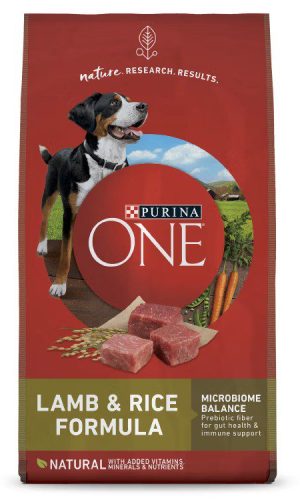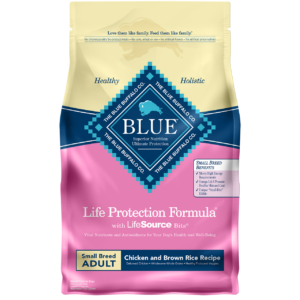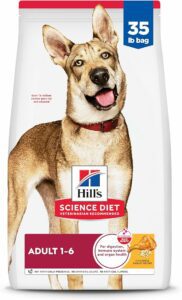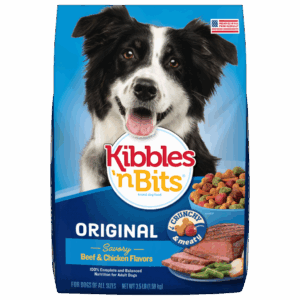This post contains affiliate links. As an Amazon Associate, I earn from qualifying purchases at no additional cost to you. For more information, please see my disclosure policy
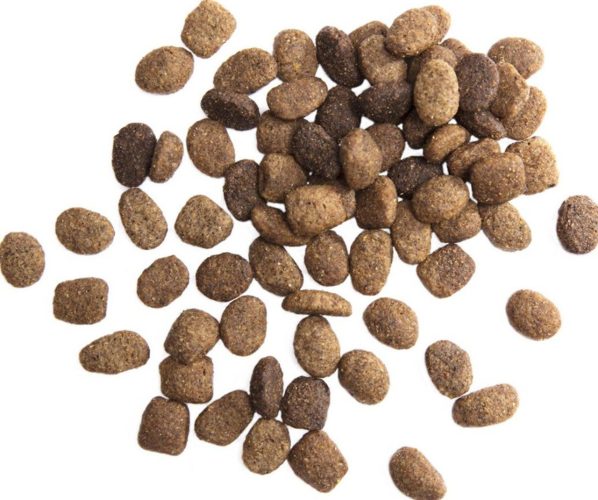
Choosing the right dog food requires careful research and consideration of multiple factors including ingredients, nutritional content, and safety record. Purina ONE Lamb & Rice Formula is positioned as a mid-tier option that features real lamb as the first ingredient and is marketed as an alternative for dogs who may be sensitive to chicken-based formulas. The product has been available for many years and is widely distributed through major retailers, making it accessible to pet owners seeking moderately priced nutrition options.
When evaluating any pet food, it’s important to consider both nutritional adequacy and recent regulatory activity. According to FDA public records, between November 2023 and April 2024, the agency received approximately 1,300 adverse event reports concerning various Purina pet food products. The FDA conducted an investigation and released a public summary in July 2024 stating that existing evidence did not identify a public health concern. However, pet owners should be aware of this regulatory activity when making feeding decisions. This review examines the product’s ingredients, nutritional profile, and provides information about recent FDA findings to help you make an informed choice for your pet.
reviewpetstuff Rating
Feature
Rating
Details
Protein Quality
Real lamb first, but includes controversial plant proteins
Digestibility
Natural ingredients with good absorption, gradual transition recommended
Price to Value
Premium quality at moderate pricing
Ingredient Quality
Mixed quality – some premium ingredients balanced with commercial fillers
Palatability
Exceptional taste acceptance, great for picky eaters
Safety Profile
Recent FDA investigation and adverse event reports
Customer Reviews
Mixed reviews due to recent safety concerns
Our In-Depth Analysis
Dive into our comprehensive reviews of pet products, ensuring you make informed decisions for your furry friend’s health and happiness.
Nutritional Breakdown: What's Actually in Purina ONE Lamb & Rice?
Let’s cut through the marketing claims and examine what’s really in that familiar red bag. When you’re serving this lamb-based formula to your dog daily, what are they actually getting for their nutrition?
Starting with protein – the building block your dog needs for strong muscles and overall health. Purina ONE Lamb & Rice delivers 26% protein on an as-fed basis, which translates to about 29.5% on a dry matter basis. That’s right in the middle range for commercial dog foods – not spectacular, but certainly adequate. Real lamb does take the top spot on the ingredient list (definitely a plus!), but don’t assume this means your dog is getting a lamb-heavy diet.
The reality is more complex. After that lamb, the formula quickly shifts to chicken by-product meal, corn gluten meal, and soybean meal to bulk up the protein numbers. The chicken by-product meal is a concentrated protein source that contains about 300% more protein than fresh meat, but it’s made from the parts left over after the choice cuts go to human food – think organs, necks, feet, and other “less desirable” parts. Not harmful, but definitely not prime ribeye either.
Here’s where it gets interesting with the plant proteins. Corn gluten meal and soybean meal are both protein-rich ingredients, but they’re what nutritionists call “incomplete proteins” for dogs. While they boost the total protein percentage on the label, they don’t provide the same biological value as animal proteins. It’s a bit like comparing a protein shake to a steak – both have protein, but your body processes them very differently.
For fats – essential for energy, brain function, and that glossy coat we all want our dogs to have – Purina ONE provides 16% on an as-fed basis (about 18.2% dry matter). The primary source is beef fat, which is preserved with mixed tocopherols (that’s vitamin E, a natural preservative – good for them!). You’ll also get some omega-6 fatty acids from the soybean oil. However, what’s missing is meaningful omega-3 content. While there’s a small amount from various sources, this formula doesn’t include fish oil or other rich omega-3 sources that you’d find in premium foods.
Now here’s the eye-opener – carbohydrates make up approximately 49% of this food. Nearly half! The carb parade is led by rice flour, followed by whole grain corn and whole grain wheat. While rice flour is generally well-tolerated and digestible, corn remains controversial in the dog food world. Some dogs handle it fine, others develop sensitivities, and many nutritionists consider it more of a cost-effective filler than a premium ingredient. That 49% carb content is significantly higher than what you’d find in truly high-end foods, which typically keep carbs in the 25-35% range to prioritize meat content.
Purina ONE does include some thoughtful additions like prebiotic fiber for digestive health and a full spectrum of vitamins and minerals to meet AAFCO requirements. However, they use standard forms of most minerals rather than the chelated versions that premium brands favor (chelated minerals are bound to amino acids, making them easier for dogs to absorb). They’ve also thrown in caramel color – which serves absolutely no nutritional purpose and exists solely to make the food look more appealing to humans buying it.
The formula includes dried carrots and dried peas, which sound healthy but appear so far down the ingredient list that they’re essentially nutritional window dressing – there’s not enough of them to make any meaningful impact.
When you strip away the marketing and look at what’s actually in the bag, Purina ONE Lamb & Rice emerges as a perfectly adequate middle-tier option. It meets all the basic nutritional requirements, starts with a quality protein source, and includes some beneficial additions like prebiotics. However, it also relies heavily on less expensive plant proteins and grains to keep costs manageable. It’s not the nutritional powerhouse you’d get from a premium food, but it’s certainly a step up from the bottom-shelf options. For many dogs with normal dietary needs and moderately active lifestyles, it provides sufficient nutrition – just don’t expect it to compete with foods costing twice as much.
Guaranteed Analysis
- Crude Protein: 26% (minimum)
- Crude Fat: 16% (minimum)
- Crude Fiber: 3% (maximum)
- Moisture: 12% (maximum).
Calculated Dry Matter Basis
When moisture is removed for accurate comparison:
- Protein: 29.5% (calculated)
- Fat: 18.2% (calculated)
- Fiber: 3.4% (calculated)
- Estimated Carbohydrates: 49% (calculated).
Purina ONE Lamb & Rice: 2025 Comprehensive Analysis & Breakdown
Protein Sources
- Lamb (primary)
- Chicken by-product meal
- Corn gluten meal
- Soybean meal
- Novel protein option
- Good for chicken sensitivity
- 26% protein content
- Mixed protein quality
- Heavy plant protein reliance
- Variable digestibility
Average for mid-tier; above minimum standards
Monitor for any digestive issues; suitable for most dogs
Fat Content
- Beef fat
- Soybean oil
- 16% fat content
- Adequate energy source
- Preserved naturally
- Supports coat health
- Standard commercial sources
- Basic fat profile
- Limited omega-3s
Standard for category; meets requirements
Store properly; consider fish oil supplement
Carbohydrates
- Rice flour
- Whole grain corn
- Whole grain wheat
- Energy provision
- Some fiber content
- Cost-effective
- High carb percentage
- Multiple grains
- Potential allergens
Higher than premium foods; typical for category
Watch for grain sensitivities; adjust portions
Vitamins and Minerals
- Standard vitamin blend
- Mixed mineral forms
- Basic antioxidants
- Essential electrolytes
- Meets AAFCO requirements
- Complete nutrition
- Immune support
- Cost-effective
- Standard formulation
- Some non-chelated forms
- Synthetic sources
- Basic absorption
Industry standard; meets minimums
Adequate for healthy adults
Fiber Sources
- Whole grains
- Some prebiotics
- Mixed sources
- Digestive support
- Stool formation
- Prebiotic benefits
- Limited variety
- Grain-based mainly
- Standard quality
Average fiber content for category
Ensure adequate water intake
Preservation
- Mixed tocopherols (Vitamin E)
- Natural preservation methods
- No artificial preservatives listed
- Natural preservation
- Stable shelf life
- Safe for consumption
- Better than chemical preservatives
- Standard preservation approach
- Limited antioxidant variety
- Basic freshness protection
Good for category; natural approach preferred
Store in cool, dry place; use within expiration date
Manufacturing
- US facilities
- Standard testing
- Recent inspection issues
- Domestic production
- Regular oversight
- FDA investigation findings
- Quality control gaps
- Safety concerns
Below expectations due to recent issues
| Monitor closely; verify lot numbers |
Ingredient Deep Dive: The Good, The Bad, and The Questionable
When you flip that Purina ONE bag over and scan the ingredient list, what should really catch your attention? Let’s break down what’s worth celebrating and what might make you raise an eyebrow.
The Good Stuff
Real lamb as the lead ingredient provides quality animal protein that dogs thrive on and offers an alternative for chicken-sensitive pets. The beef fat is naturally preserved with mixed tocopherols (no artificial preservatives – a point in their favor), and the prebiotic fibers support gut health. The formula includes natural sources of glucosamine for joint support, which is a thoughtful addition for adult dogs.
The Not-So-Great
The heavy reliance on corn and multiple grains as primary ingredients is concerning – these are inexpensive fillers with modest nutritional value for dogs. Chicken by-product meal quality varies dramatically depending on what’s included, and it seems counterintuitive in a “lamb and rice” formula marketed for chicken-sensitive dogs. The inclusion of both corn gluten meal and soybean meal means you’re getting significant plant-based proteins that boost label numbers but provide lower biological value than meat proteins.
The Questionable
Most disappointing is the caramel color – a purely cosmetic additive with zero nutritional benefit that simply doesn’t need to be there. The formula also contains multiple potential allergens (corn, wheat, soy, chicken) despite being positioned as suitable for dogs with sensitivities.
The Bottom Line
Purina ONE Lamb & Rice contains a mixture of quality and cost-effective ingredients. While it doesn’t include dangerous additives, it relies on fillers and controversial ingredients you wouldn’t find in premium foods. For many healthy adult dogs, these ingredients are adequate and reflect the mid-tier pricing. However, given the recent safety concerns, if you’re committed to avoiding artificial colors, have dogs with multiple sensitivities, or prioritize manufacturers with cleaner recent safety records, this might not align with your priorities. For pet owners seeking reasonable nutrition at an accessible price point – and willing to accept the recent regulatory activity – it represents a compromise between quality and affordability.
Real-World Performance: What Pet Parents Are Actually Saying
So the nutritional analysis looks decent on paper, but how does Purina ONE Lamb & Rice perform in real dogs’ bowls across America? We’ve compiled feedback from thousands of pet parents to give you the unfiltered truth about real-world results.
The Positive Feedback
Most loyal Purina ONE customers praise the food’s palatability – dogs typically enjoy the taste and finish their bowls readily. Many report that it works well for dogs with chicken sensitivities, providing a viable alternative protein source. Pet parents frequently mention reasonable pricing: “It provides good nutrition without breaking the bank,” captures a common sentiment. The digestible formula works well for many dogs, with owners reporting normal, well-formed stools and good energy levels.
The Concerns and Criticisms
Not everyone’s experience has been positive, particularly in light of recent events. Some owners report initial digestibility issues during food transitions, with soft stools or mild stomach upset during the first week. Most significantly, increased awareness of the recent FDA investigation and adverse event reports has made many pet parents reconsider their choice, with some switching to alternative brands as a precautionary measure.
Ingredient-conscious pet parents express ongoing concerns about the multiple grains and plant proteins, especially given that this is marketed as suitable for dogs with sensitivities. Occasionally, reviewers mention inconsistency between bags, though these reports are relatively rare.
Veterinary Perspectives
Many veterinarians still consider Purina ONE an acceptable choice for healthy adult dogs, though some have become more cautious following the recent FDA investigation. Veterinary nutritionists generally place it in the “adequate” category – meeting nutritional requirements without exotic ingredients. However, the unprecedented volume of adverse event reports has led some professionals to recommend extra caution, particularly for sensitive pets.
The Current Reality
The 2023-2024 safety concerns have significantly impacted customer confidence. While many dogs continue to do well on Purina ONE, the sheer volume of consumer complaints has created a more cautious environment. Pet parents are increasingly asking questions about alternatives and monitoring their pets more closely than before.
Purina ONE still performs adequately for many average, healthy adult dogs, and its wide availability remains an advantage. However, the recent regulatory activity has shifted the conversation from simple nutrition and affordability to include safety considerations that weren’t prominent in previous years.
The Bottom Line: Is Purina ONE Worth It in 2024?
After our comprehensive analysis, Purina ONE Lamb & Rice Formula emerges as a 2.5 out of 5 star option – falling into the “below average” category for 2024, primarily due to significant safety concerns that overshadow its nutritional adequacy. While it provides reasonable nutrition at a competitive price point, recent events have fundamentally changed the evaluation landscape.
For many dog owners, this food previously represented a reasonable compromise between nutrition and budget. The protein content meets AAFCO standards, and the inclusion of real lamb as the first ingredient puts it ahead of truly budget options that rely solely on by-products and fillers.
However, the unprecedented volume of adverse event reports (1,300+ in just 5 months) and the FDA investigation significantly impact any current recommendation. While no specific contamination was identified, the sheer scale of consumer complaints represents a safety profile unlike anything seen in recent pet food history. Additionally, the high carbohydrate content (49%) and inclusion of multiple controversial ingredients prevent it from competing with brands that have both better nutrition and cleaner safety records.
Who might still choose Purina ONE Lamb & Rice:
- Pet parents specifically needing a chicken alternative at this price point
- Owners of dogs currently doing well on the food who choose to continue with close monitoring
- Those in areas with limited premium brand availability
- Budget-conscious families willing to accept recent safety concerns for affordability
Who should definitely look elsewhere:
- Pet owners prioritizing safety and peace of mind
- Dogs with any existing health sensitivities or issues
- Owners seeking premium nutrition without safety question marks
- Those wanting to avoid companies with recent significant regulatory activity
- Pet parents who can afford alternatives with cleaner safety records
The 2025 Assessment
Purina ONE Lamb & Rice occupies a specific niche in the dog food market – providing chicken-free nutrition at accessible prices. While it doesn’t compete with premium brands on protein density or ingredient quality, it successfully delivers on its core promise of lamb-based nutrition without chicken.
However, the recent FDA investigation involving 1,300+ adverse event reports fundamentally changes the risk-benefit analysis. While no specific contamination was found, the unprecedented volume of consumer complaints creates a safety profile that conscientious pet owners must factor into their decision-making process.
The food’s wide availability and moderate pricing make it an attractive option for pet owners needing chicken alternatives without premium pricing. However, those seeking optimal nutrition or maximum peace of mind would likely benefit from considering alternative lamb-based formulas from manufacturers with cleaner recent safety records.
Remember This: When choosing dog food in 2025, the best option balances your pet’s specific nutritional needs with your budget, dietary requirements, and safety considerations. Purina ONE Lamb & Rice provides adequate alternative protein nutrition for average dogs at reasonable prices, but the recent regulatory activity adds a layer of concern that didn’t exist in previous years. Monitor your dog’s response closely and consider alternatives if you have any concerns about their health or well-being.
References
- AAFCO Official Publication (2025)
- FDA Summary of Purina Adverse Event Reports
- Nestlé Purina PetCare official product information
- Public customer review compilation from major retailers
- Veterinary nutritional guidelines and standards
Last updated: June 2025
Disclaimer: This review provides educational information about budget dog food nutrition. Always consult with your veterinarian before making dietary changes, especially for dogs with health conditions, and consider your family’s financial situation when making feeding decisions.
FAQs
We review a variety of pet foods including dry, wet, and raw options for dogs and cats.
Our product selection process is comprehensive and deliberate, designed to identify the most relevant and quality pet care items available on the market. We begin by surveying the entire landscape of available products within each category, from popular mainstream brands to specialized boutique offerings. Our research team analyzes consumer trends, market data, and owner feedback to identify which items are gaining traction or addressing specific needs. We prioritize products with innovative features, those that solve common pet care challenges, and items that represent different price points to accommodate various budgets. Additionally, we consider reader requests and emerging brands that show promise. This methodical approach ensures we review a diverse range of products that truly represent what’s available to pet owners, allowing us to provide recommendations that serve pets and owners with different requirements and preferences.
Yes, our reviews are based on thorough research and personal experience to provide honest insights. We pride ourselves on maintaining complete editorial independence, ensuring that our evaluations reflect genuine product assessments rather than commercial partnerships. Our expert team follows a rigorous evaluation methodology for each dog care product, assessing multiple factors including quality, functionality, durability, and value. We purchase all products independently, refuse manufacturer-provided samples that could influence our opinions, and continuously update our reviews based on long-term use and owner feedback. Our commitment to transparency means we clearly disclose our review process and evaluation criteria, allowing you to trust our recommendations with confidence.

